Lavender is a beloved herb known for its fragrant blooms and versatile uses. Whether you’re a seasoned gardener or just starting, growing lavender can be a rewarding experience.
In this guide, we’ll explore the benefits of cultivating this aromatic plant and dive into some of my favorite lavender varieties.
Benefits of Growing Lavender
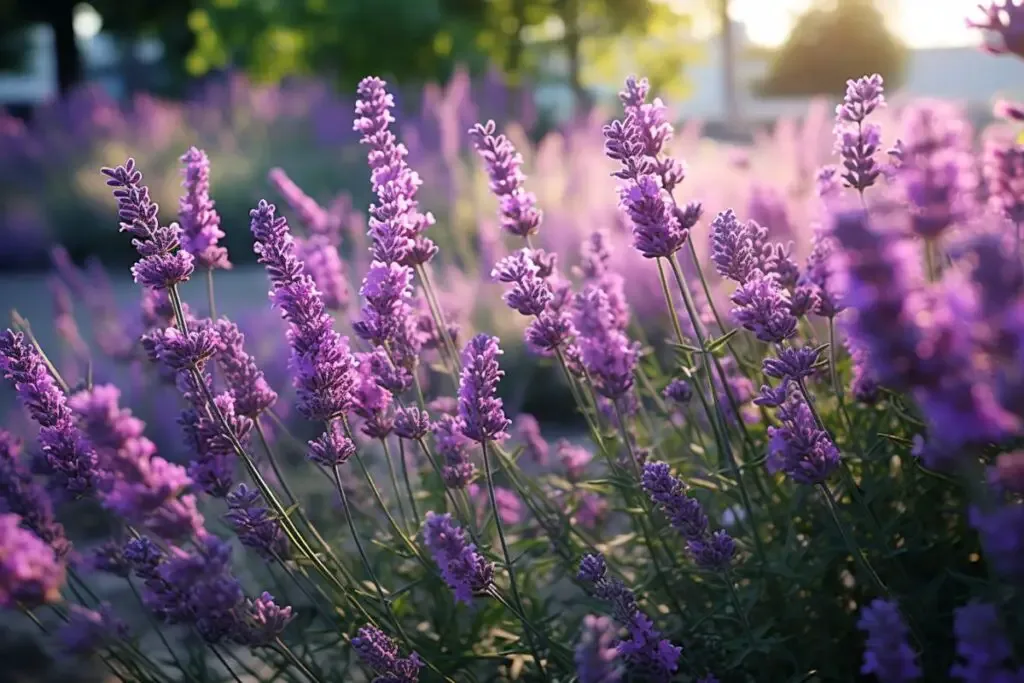
Lavender offers a multitude of benefits that go beyond its enchanting scent. Here are three compelling reasons to consider adding lavender to your garden:
1. Aromatic Bliss
Lavender’s soothing aroma is not only delightful but also therapeutic. It can reduce stress, anxiety, and promote relaxation. Simply brushing against the lavender bushes in your garden can release its calming scent, making it a natural stress-reliever.
2. Attracting Pollinators
Lavender’s vibrant purple flowers are a magnet for pollinators, such as bees and butterflies. By planting lavender, you’re not only beautifying your garden but also providing a valuable food source for these essential creatures, contributing to the overall health of your local ecosystem.
3. Culinary Delights
Lavender is a versatile herb that can be used in the kitchen to add a unique flavor to both sweet and savory dishes. From lavender-infused honey to lavender lemonade, its culinary uses are endless. Freshly harvested lavender buds can elevate your cooking to a whole new level.
My Favorite Lavender Varieties
Now that you’re aware of the fantastic benefits of growing lavender, let’s explore some of my personal favorite lavender varieties, each with its distinct charm:
1. English Lavender (Lavandula angustifolia)
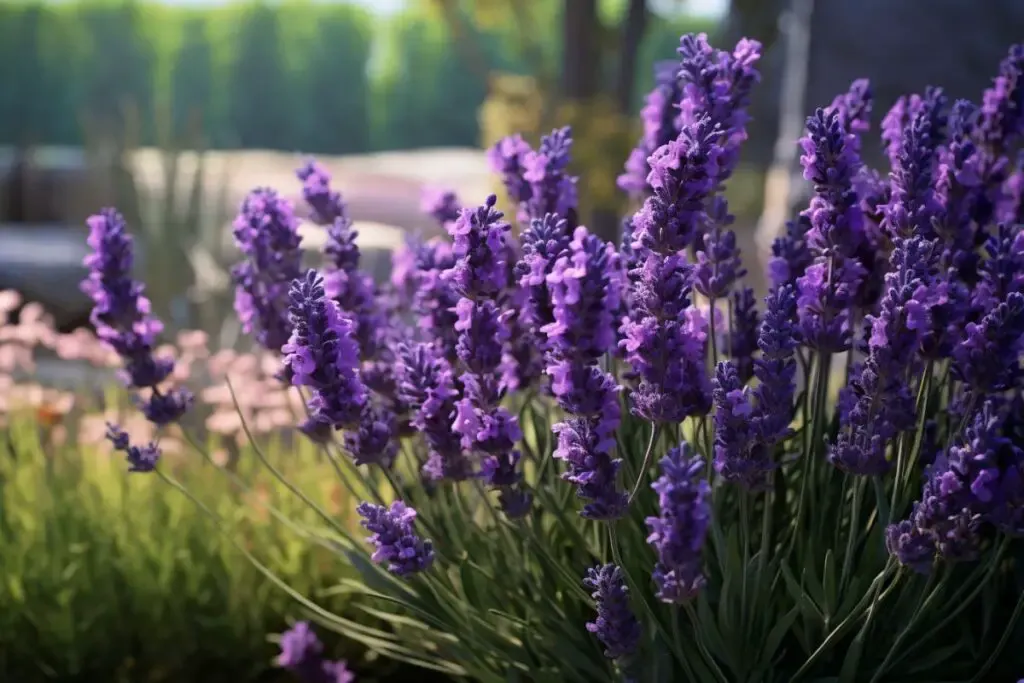
English lavender is the classic choice for many gardeners. Its slender, aromatic leaves and iconic lavender-blue flowers make it a staple in cottage gardens. This variety is well-suited for culinary purposes due to its mild flavor. ‘Munstead’ and ‘Hidcote’ are popular cultivars known for their compact growth and fragrant blossoms.
2. French Lavender (Lavandula stoechas)
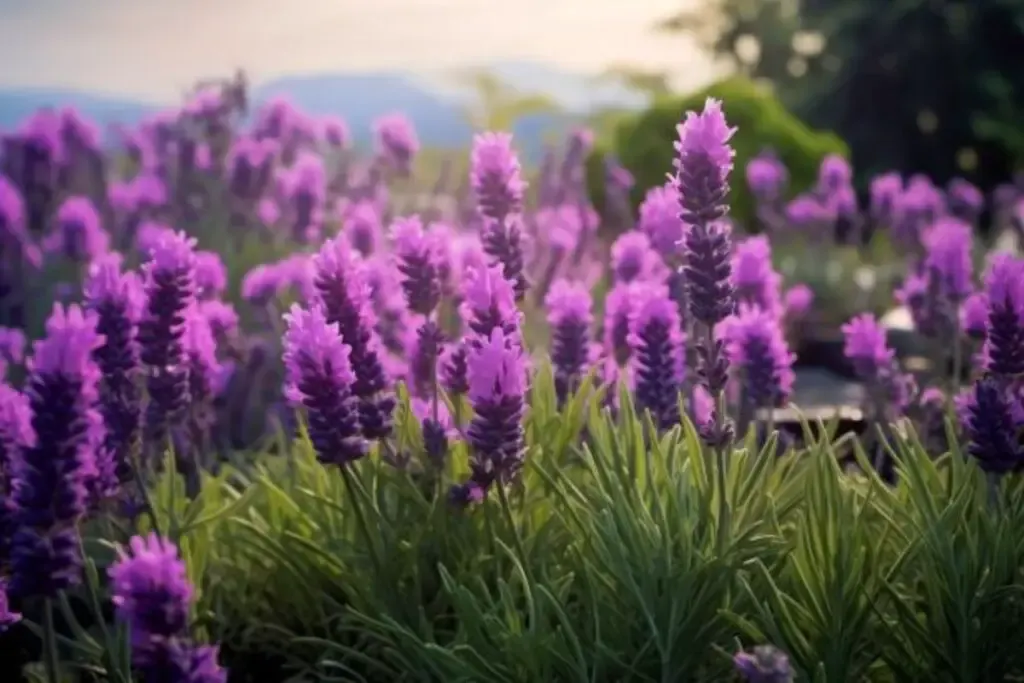
French lavender is recognizable by its showy, tufted flowers adorned with colorful bracts. Unlike English lavender, it has a bolder, somewhat spicy fragrance. ‘Anouk’ and ‘Spanish Eyes’ are delightful cultivars that thrive in warmer climates, making them perfect for Mediterranean-style gardens.
3. Lavandin (Lavandula x intermedia)
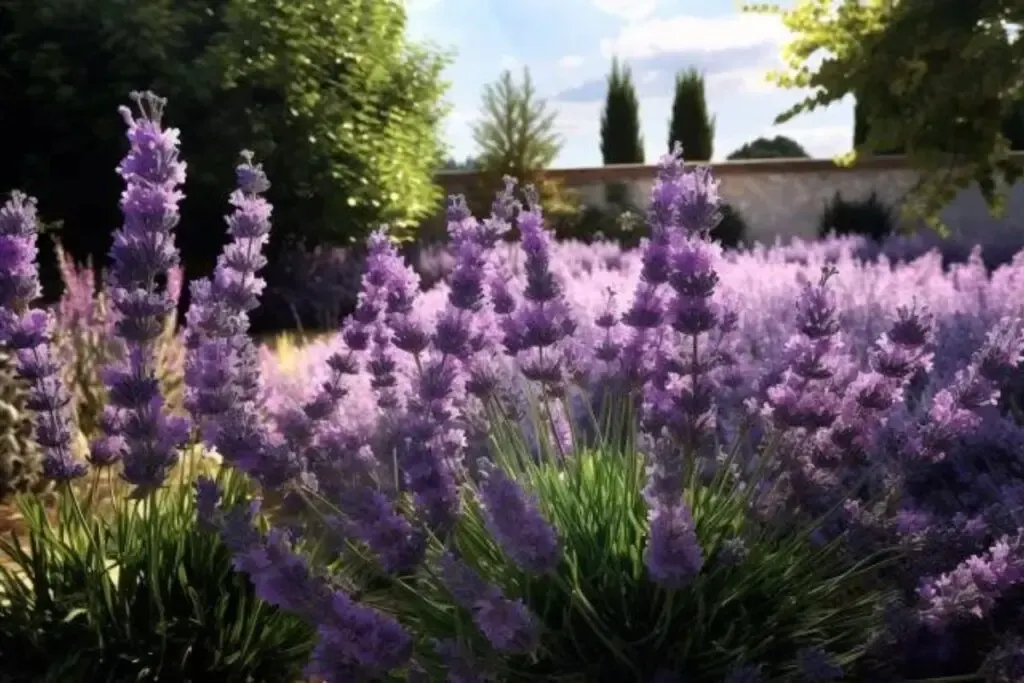
Lavandin is a hybrid lavender that combines the best of both English and spike lavender. It boasts long stems with abundant flowers, making it an excellent choice for crafting lavender wreaths and sachets. ‘Grosso’ and ‘Provence’ are two sought-after lavandin varieties, known for their high oil content and intense fragrance.
When choosing lavender varieties for your garden, consider your climate, as some types may be more suited to hot, dry conditions while others thrive in cooler climates.
Lavender Care
Now that we’ve explored the benefits of lavender and discussed some favorite varieties, it’s time to dive into the essential care guidelines to ensure your lavender plants thrive in your garden.
Planting
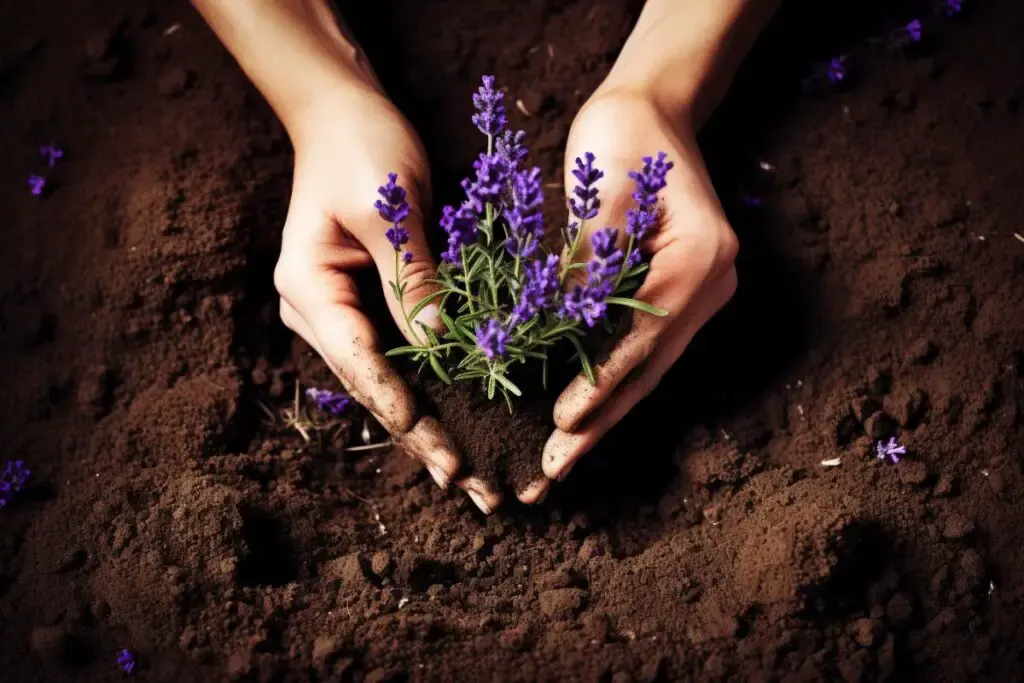
When it comes to planting lavender, follow these steps for success:
- Choose a sunny spot: Lavender loves sunlight and thrives in well-drained soil. Select a location in your garden that receives at least 6-8 hours of direct sunlight daily.
- Proper spacing: Allow enough space between lavender plants to promote air circulation and prevent overcrowding. Typically, spacing them 18-24 inches apart is ideal.
- Soil preparation: Lavender prefers slightly alkaline soil with good drainage. To improve soil drainage, consider adding sand or gravel to the planting hole. If your soil is acidic, amend it with lime to raise the pH.
Light
Lavender is a sun-loving plant, and providing it with the right amount of light is crucial for its growth and blooming:
- Full sun: Lavender thrives in full sunlight. Ensure it receives at least 6-8 hours of direct sunlight daily for optimal growth and vibrant blooms.
Soil
Lavender’s soil requirements are straightforward, but they play a significant role in its overall health:
- Well-drained soil: Lavender dislikes wet feet, so well-draining soil is essential. Mix in sand or gravel to improve drainage if your soil retains too much moisture.
- Slightly alkaline pH: Lavender prefers soil with a pH level between 6.5 and 7.5. If your soil is too acidic, consider adding lime to raise the pH.
Water
Proper watering is essential to prevent lavender from becoming too thirsty or waterlogged:
- Infrequent watering: Lavender prefers to dry out between watering. Water deeply but less frequently, allowing the top inch or two of soil to dry before the next watering.
- Water at the base: Avoid wetting the foliage when watering, as this can lead to disease. Direct the water towards the base of the plant.
Temperature and Humidity
Understanding lavender’s temperature and humidity preferences is key to its well-being:
- Hardiness zones: Lavender is typically hardy in USDA zones 5-9, but specific varieties may have different tolerances. Check the recommended hardiness zone for your chosen lavender variety.
- Low humidity: Lavender prefers low-humidity environments. High humidity can lead to fungal issues, so ensure good air circulation around the plants.
Fertilizer
Lavender is a relatively low-maintenance plant when it comes to fertilizer:
- Minimal fertilizer: Lavender doesn’t require heavy feeding. In fact, excessive fertilizer can lead to leggy growth and fewer blooms. A light application of a balanced, slow-release fertilizer in early spring is usually sufficient.
Pruning
Pruning lavender is essential to maintain its shape, promote healthy growth, and prevent it from becoming woody and overgrown. Here’s how to do it:
- Spring pruning: In early spring, when you see new growth but before it blooms, trim back about one-third of the plant’s height. Be sure to cut just above a set of healthy leaves, avoiding cutting into old wood.
- Deadheading: After the first bloom, remove spent flowers to encourage the plant to produce more blooms throughout the season.
- Annual maintenance: Each year, typically in the spring or early summer, give your lavender a light pruning to maintain its shape and remove any dead or woody growth.
Propagating
If you want to expand your lavender collection, you can propagate lavender through various methods:
- Softwood cuttings: Take 3-4 inch cuttings from young, healthy shoots in the spring or early summer. Remove the lower leaves and place the cuttings in a well-draining potting mix. Keep them moist and warm until they root.
- Lavender seeds: You can also propagate lavender from seeds. Start seeds indoors in early spring, and once they develop into sturdy seedlings, transplant them outdoors when the weather is warm.
How to Grow Lavender From Seed
Growing lavender from seed can be a rewarding experience. Here’s how to do it:
- Start indoors: Begin by sowing lavender seeds in trays or pots indoors 8-12 weeks before the last expected frost date in your area.
- Use well-draining soil: Fill seed trays with a seed-starting mix or a blend of sand and potting soil.
- Keep it warm: Lavender seeds require consistent warmth to germinate, so maintain a temperature of around 70-75°F (21-24°C).
- Transplant carefully: Once seedlings have at least two sets of true leaves, transplant them into individual pots. Harden them off by gradually exposing them to outdoor conditions before planting them in your garden.
Growing in Pots
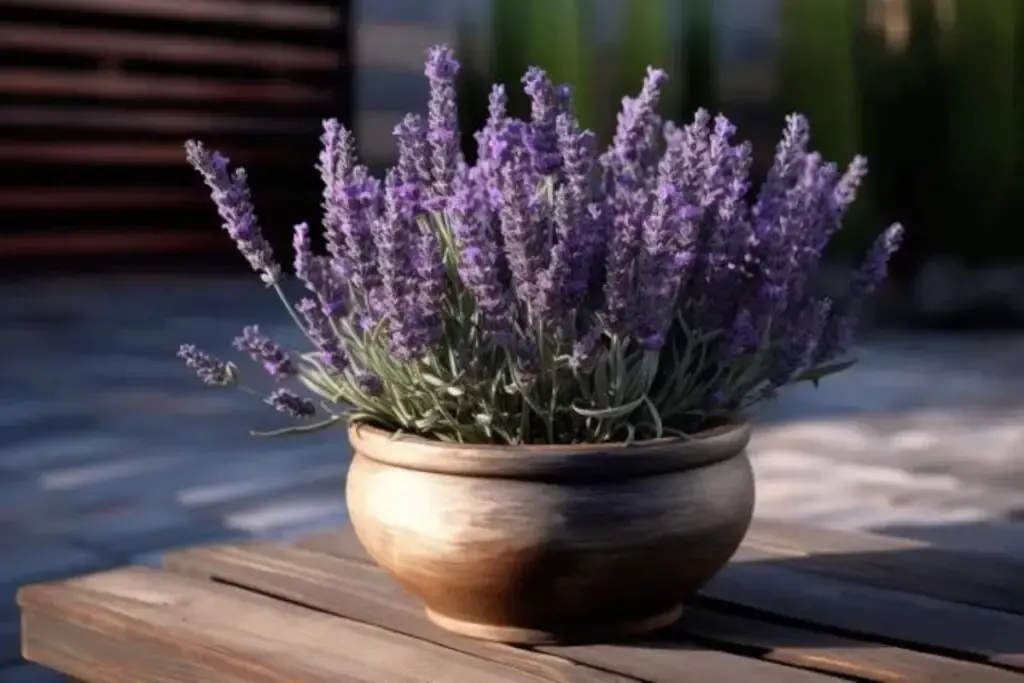
Lavender is well-suited for container gardening. Here’s how to grow lavender in pots:
- Choose a suitable container: Select a pot with good drainage that’s at least 12 inches deep. Terra cotta pots work well because they allow excess moisture to evaporate.
- Use a well-draining mix: Fill the pot with a well-draining potting mix, or create your own by combining potting soil with sand or perlite.
- Position in sunlight: Place the pot in a sunny location where the lavender can receive 6-8 hours of direct sunlight daily.
- Water thoughtfully: Water potted lavender when the top inch of soil feels dry. Be careful not to overwater, as pots can retain moisture.
Overwintering
Lavender is generally hardy, but in colder climates, it may need some protection during the winter:
- Mulch: Apply a layer of mulch around the base of the plant to insulate the roots and protect them from extreme cold.
- Pruning: Avoid heavy pruning in the fall; instead, wait until spring to trim the plant.
Transplanting
If you need to move your lavender to a new location, follow these steps:
- Transplant in spring or fall when the weather is mild.
- Dig a hole slightly larger than the root ball of the lavender.
- Carefully lift the plant, keeping the roots intact, and place it in the new hole.
- Water thoroughly after transplanting, and provide extra care to ensure it establishes well in its new spot.
Common Pests & Diseases
Lavender is relatively pest and disease-resistant, but it’s not immune. Keep an eye out for aphids, spider mites, and fungal issues like root rot. To combat these problems, practice good garden hygiene, ensure proper spacing for air circulation, and use organic pest control methods when necessary.
By following these guidelines for pruning, propagating, growing, and caring for lavender, you’ll be well on your way to having a flourishing lavender garden, whether in the ground, pots or even from seeds.
Enjoy the beauty and fragrance that lavender brings to your outdoor space!

